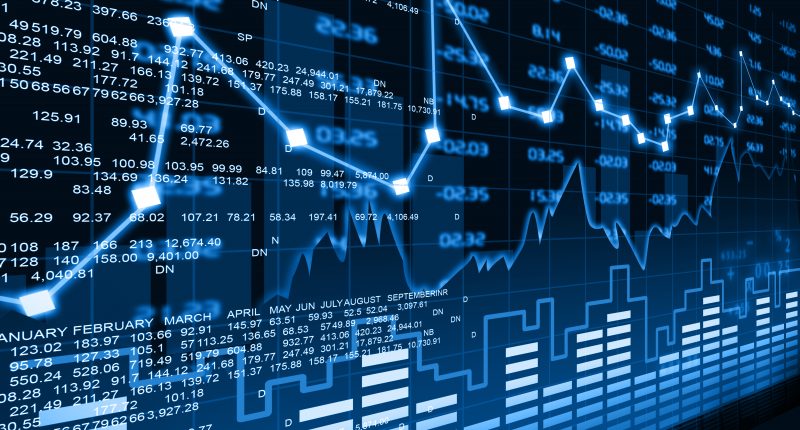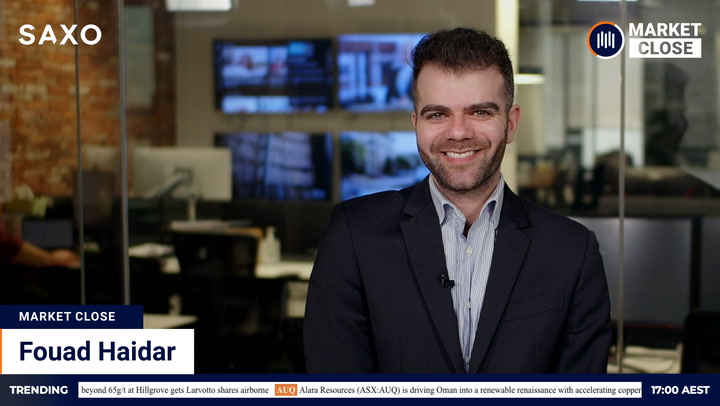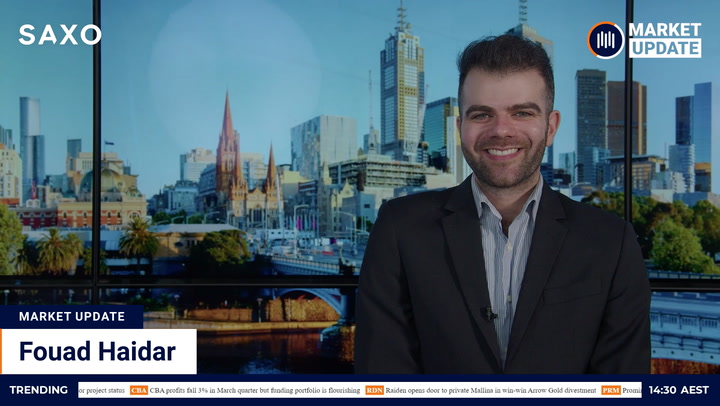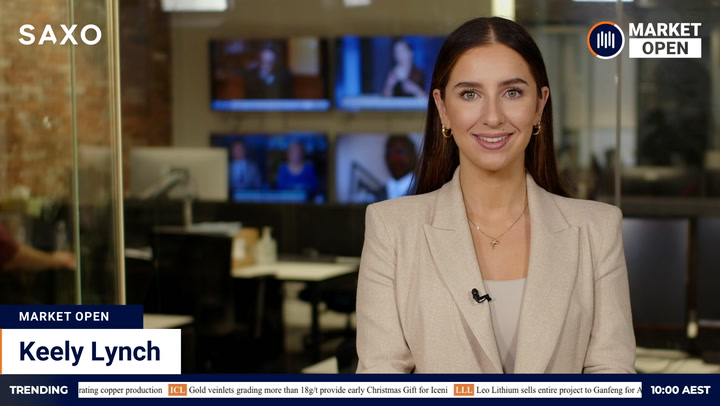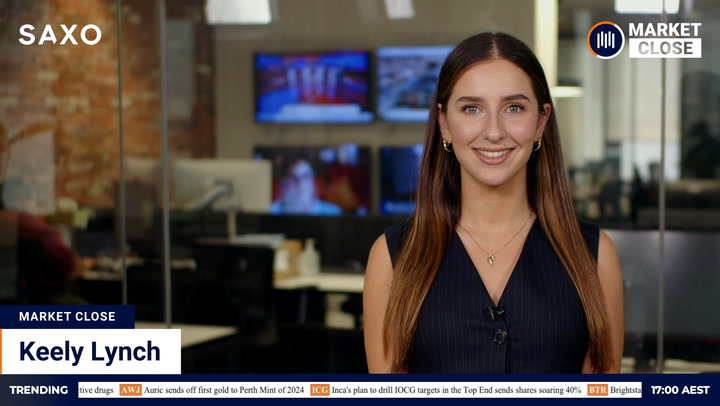Australian shares are set to open sharply lower after Federal Reserve chief Jerome Powell said the US central bank was open to a jumbo rate rise this month, sending stocks into a tailspin.
Wall Street’s main indices lost between 1.25 and 1.7 per cent after Powell warned the top of this interest rate cycle could be further off than previously indicated.
The US dollar surged, driving the Australian dollar down more than 2 per cent and gold down almost two per cent. Oil and industrial metals also sank.
The S&P/ASX 200 will open 60 points or 0.82 per cent lower, according to futures action. A fall of that scale would erase almost two days of gains for the Australian benchmark.
Wall Street
US stocks plunged as markets priced in a higher top to this rates cycle and a greater likelihood of a 50 basis points rate hike in two weeks. Markets reset their expectations following a hawkish appearance by Fed chief Powell before Congress.
The S&P 500 dropped 62 points or 1.53 per cent. The Dow Jones Industrial Average gave up 575 points or 1.72 per cent. The Nasdaq Composite lost 145 points or 1.25 per cent.
Powell told the Senate Banking Committee the bank would consider larger rate hikes if economic data indicated inflation was not coming down quickly enough. His remarks followed unexpectedly strong jobs and inflation reports in the last few weeks.
“The latest economic data have come in stronger than expected, which suggests that the ultimate level of interest rates is likely to be higher than previously anticipated,” Powell said.
“If the totality of the data were to indicate that faster tightening is warranted, we would be prepared to increase the pace of rate hikes.”
The odds on a 50bps rate hike this month jumped to 57 per cent from 23 per cent before Powell’s remarks. Futures pricing indicated the market now expects a terminal rate of 5.6 per cent, up from 5.47 per cent previously.
“Powell hit the market right between the eyes saying if the economy is flying high and moving faster this year, then monetary policy will have to follow with faster and higher rates if they are going to have any chance at bringing inflation down,” Chris Rupkey, chief economist at FWDBONDS, said.
“The market heard the word ‘faster’ and that was all they needed to price in a greater chance of a 50 bps rate hike in two weeks.”
The US dollar index jumped 1.2 per cent to its highest since early December. The yield on two-year US treasuries climbed above 5 per cent for the first time since 2007.
Powell indicated the Fed’s next move would depend on the data, raising the stakes for Friday’s jobs report. Economists expect nonfarm payrolls to increase by around 200,000, compared to a shock 517,000 in January.
February inflation figures follow next Tuesday. Powell is due to appear before the House Financial Services Committee tonight.
Banks copped the worst of the selling amid fears rate rises will tip the economy into recession. Wells Fargo lost 4.65 per cent, Bank of America 3.2 per cent and Goldman Sachs 3.08 per cent.
Australian outlook
A challenging session coming up after Fed chief Powell once again doused the animal spirits that had lifted equity markets this year. The terminal rate in the US keeps creeping higher and later into the year, dulling the outlook for equities.
The Australian dollar was taken to the woodshed. With the US looking at several more rate hikes compared to perhaps one more here, the Aussie was chopped 2.07 per cent to 65.92 US cents, a level last seen in mid-November.
The S&P/ASX 200 is likely to face similar treatment this morning. The local benchmark has risen for the last four sessions, but looks likely to give a chunk of that back.
One wildcard this morning is an appearance by Reserve Bank Governor Philip Lowe at the Australian Financial Review Business Summit in Sydney. The central bank chief is due to speak from 8.55 am AEDT and is certain to face questions about the outlook for interest rates.
Stocks charged yesterday after the RBA appeared to amend its forward guidance to allow for the possibility of just one more rate hike. Confirmation or denial of that interpretation could have a big impact on how this session plays out. Denial would mean dollar up, additional pressure on shares; confirmation would mean dollar down, pressure eased on shares.
There were no hiding places on Wall Street overnight. Sector losses ranged from 0.97 per cent (consumer staples) up to 2.54 per cent (financials).
The highly-geared real estate sector was second-worst, down 2.5 per cent. Materials was next, down 1.98 per cent.
Woodside Energy heads the list of companies trading ex-dividend today. Also going “ex-“ are Brambles, Blackmores, Costa Group and Super Retail Group.
Commodities
A blistering rally in the US dollar kneecapped dollar-denominated commodities. The US Dollar Index, which measures the greenback against a basket of other currencies, climbed 1.2 per cent to a level last seen in early December.
Gold, which competes with the greenback for investment flows, sank to its lowest in a week. Gold for April delivery settled US$34.60 or 1.9 per cent lower at US$1,820 an ounce.
Silver fell 4.4 per cent to US$20.199 an ounce. The NYSE Arca Gold Bugs Index slumped 3.83 per cent.
“Powell’s testimony proves that the Fed’s kryptonite can still sap gold’s power,” Adrian Ash, director of research at BullionVault, told MarketWatch.
Industrial metals, also priced in US dollars, felt the heat on the London Metal Exchange. Benchmark LME copper sagged 2.11 per cent to US$8,732.50 a tonne.
Aluminium dropped 1.49 per cent to US$2,346.60. Nickel fell 1.31 per cent to US$24,125. Lead retreated 1.7 per cent to US$2,086.50, zinc 3.42 per cent to US$2,947 and tin 1.62 per cent to US$24,177.
Oil fell to its first loss in six sessions as fears of a US slowdown compounded weak Chinese import data earlier in the day. Chinese imports declined 10.2 per cent in the first two months of the year, twice what economists expected.
Brent crude settled US$2.89 or 3.4 per cent lower at US$83.29 a barrel. West Texas Intermediate dropped 3.6 per cent to US$77.58.
Iron ore rebounded yesterday as milder weather fuelled hopes of improved Chinese demand as data showed steel production increased at the end of last month. The China Iron and Steel Association said steel output expanded by 5.16 per cent between February 21 and 28 from the previous ten-day period.
The most-traded May ore on the Dalian Commodity Exchange ended daytime trading 1.34 per cent ahead at 909.5 yuan (US$131.09) a tonne, reversing more than half of Monday’s 2.13 per cent fall.
BHP‘s US-traded depositary receipts declined 2.86 per cent. Earlier, the miner’s UK stock shed 1.2 per cent. Rio Tinto gave up 2.88 per cent in the US and 1.31 per cent in the UK.
Battery metal miners weakened for a second session. The Global X Lithium & Battery Tech ETF sagged 3.12 per cent on the New York Stock Exchange. Today’s close was the lowest in more than a week.

